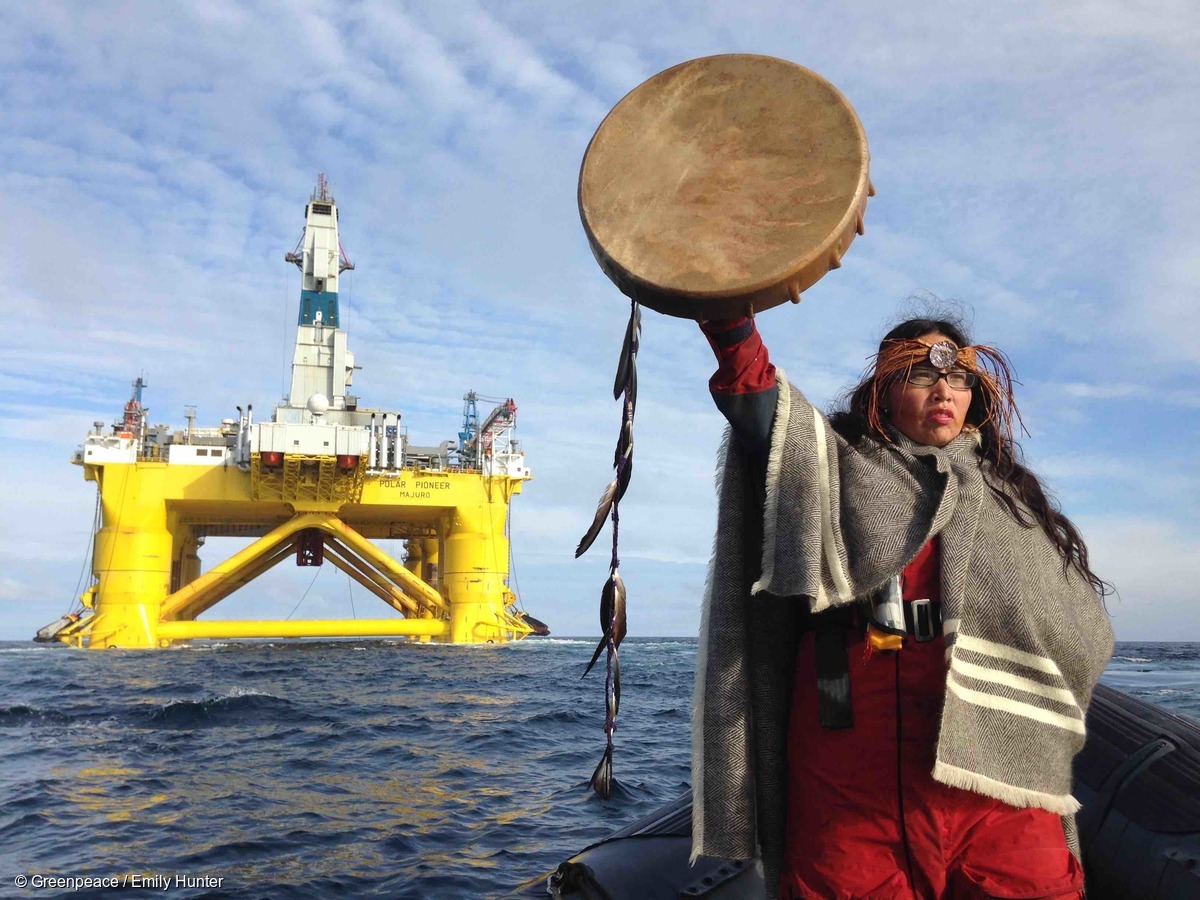Today, on International Day of the World’s Indigenous People, and every day, it is crucial to work in solidarity with Indigenous protectors. Climate, water, and justice depend on it.


Thousands of marchers rally in Washington DC to stand up for indigenous rights in 2017.
My peoples are native to the lands that make up present-day Mexico and the border region of Arizona. They are some of the last in North America to maintain their pre-Columbian cultural traditions. But with every year that passes, my people lose more and more of themselves and the culture they have protected for millennia, as well as the lands they have stewarded.
Our legacies on our lands are being swept away as the Mexican government develops on them and builds new highways, and as the American government desecrates them by building a racist “border wall.” This is not a unique story, but a tragically common experience with Indigenous Peoples in every corner of the earth.
Nature is found at the intersection of most Indigenous Peoples’ identity, religion, culture, and community. We are therefore compelled to protect it. We hold many elements of the natural world as sacred; plants, animals, water, land, rain, wind, the seas. Indigenous roots have always and will always run deep in the lands that colonialism has stolen.
The land is our culture and a vital piece of our legacy.

Audrey Siegl, a Musqueam woman from Canada, defiantly signaling Shell’s subcontracted drilling rig to stop.
Indigenous resistance is a key component in the environmental movement here in the US. Indigenous People are on the frontlines of the climate crisis, protecting some of the most endangered lands, as well as the water, animals, and people to which they provide a home.
Nearly four years ago, the nation watched as Indigenous water protectors took on Energy Transfer Partners’ Dakota Access Pipeline in Standing Rock. Last year, the world watched as Indigenous Hawaiians are protecting their most sacred mountain, Mauna Kea, from the scientific imperialism in the form of the Thirty Meter Telescope. And now we watch as the Kumeyaay resist against the construction of the border wall on their lands. All across the nation and the world — Indigenous resistance and protection of what is rightfully theirs is not new, and it’s no small feat.

A line of National Guard and police advance toward a water protector holding an eagle feather at a camp near the Standing Rock Reservation in the direct path of the Dakota Access pipeline.
At Greenpeace, we know that climate justice means Indigenous sovereignty. Traditional Indigenous territories encompass approximately 22% of the world’s land surface, yet they hold 80% of the world’s biodiversity. This biodiversity is under threat from mining, fossil fuel extraction, agriculture, deforestation, and climate change.
Maintaining the covenant between humans and the natural world is essential to our survival, and it begins with protecting and affirming the collective and individual rights of Indigenous Peoples.
This protection of fundamental rights of Indigenous Peoples and other communities is essential to achieve solutions to the climate breakdown and other massive environmental problems.

© Honor the Earth
Greenpeace is in solidarity with our Indigenous allies in this movement. Let’s join in celebrating the brave activists and defenders who are on the frontlines of environmental protection.
Indigenous Peoples Power Project in the United States, who work to offer non-violent direct action training, action support, and network building for Native activists that is customized to fit the traditions of Indigenous communities.
View this post on Instagram
Indigenous Environmental Network is an alliance working to protect the sacredness of Earth Mother from contamination and exploitation by strengthening, maintaining and respecting Indigenous teachings and natural laws.
View this post on Instagram
Honor the Earth, whose mission is to create awareness and support for Native environmental issues and to develop needed financial and political resources for the survival of sustainable Native communities by using music, the arts, the media, and Indigenous wisdom.
View this post on Instagram
Native Renewables is working to empower Native American families to achieve energy independence by growing renewable energy capacity and affordable access to off-grid power.
View this post on Instagram
Idle No More San Francisco is a group of Native Americans and allies working together to create positive change concerning Indigenous rights, the rights of Mother Earth, and the rights of the coming generations to a sustainable and healthy environment.
View this post on Instagram
The International Indigenous Youth Council is rooted in the protection of the elements and has been brought together and continue to be guided by the prayer for the water. They are bringing together young individuals to build bridges of solidarity and become leaders of their communities.
View this post on Instagram
The Kumeyaay Defense Against the Wall is a small Indigenous initiative that is rooted in prayer to defend Kumeyaay lands and people against the construction of the border wall.
View this post on Instagram
The Gidimt’en Checkpoint and the Wet’suwet’en people, who have been resisting the Coastal Gaslink Pipeline from being built on their lands.
View this post on Instagram
On this International Day of the World’s Indigenous People, we carry the same global message: Environmental justice and social justice are one.
The future is Indigenous.
Originally published on August 9, 2019; last updated on August 9, 2020.
